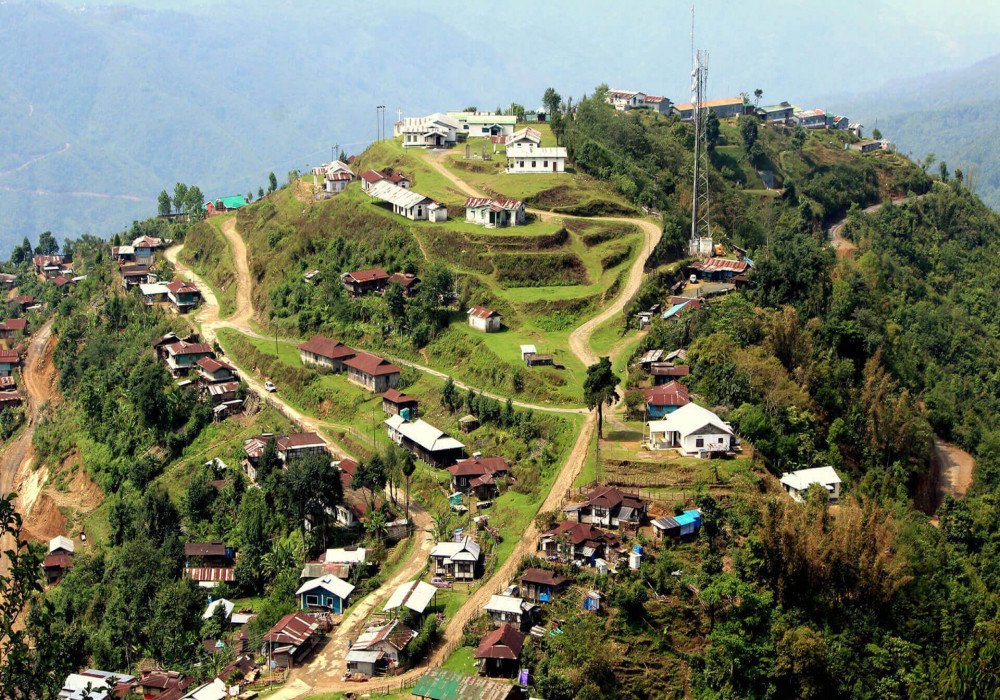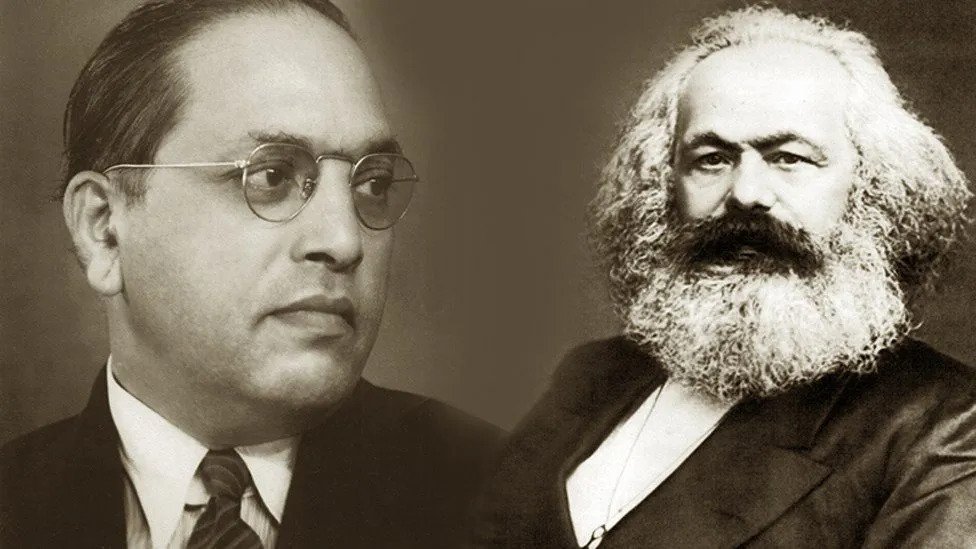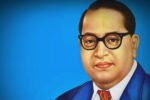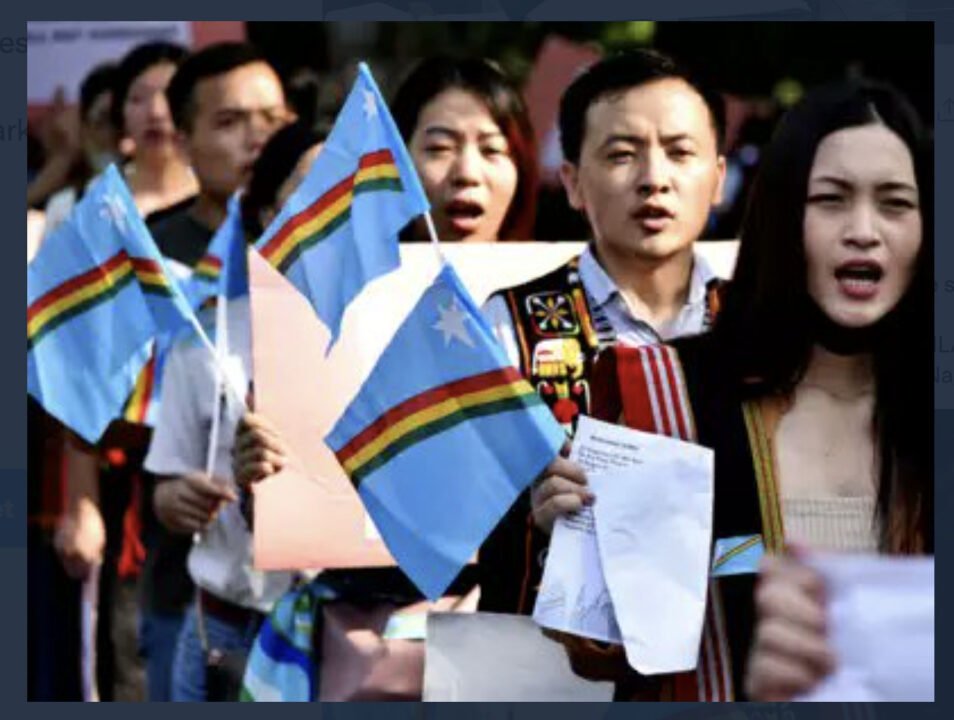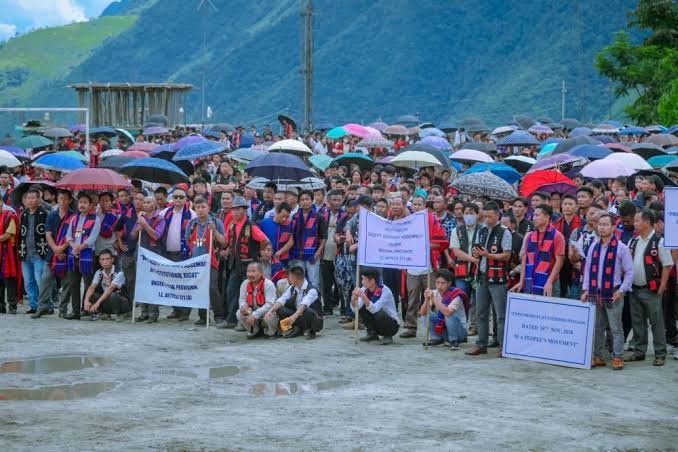By: Dr. Aniruddha Babar
“If you ask me, my ideal would be the society based on liberty, equality and fraternity. An ideal society should be mobile and full of channels of conveying a change taking place in one part to other parts.” ~ Dr. B.R. Ambedkar
Political actors must always reckon with natural limits, structural bias, institutional inertia, vested interests and the actions of their opponents, not to mention irreducible uncertainty about the future. Movement for a Frontier Nagaland has taken a great momentum in past few weeks. Taking the agitation for separate statehood for the people of Eastern Nagaland to the next level, the Central Executive Council (CEC), Eastern Nagaland People’s Organization (ENPO) has demanded the resignation of 20 legislators of Eastern Nagaland from the state Legislative Assembly if not an early resolution is provided from the government of India on its “Frontier Nagaland” demand. However, at the same time, there have also been voices of opposition to this demand which found to be equally getting stronger. The opposition coming on various grounds like –
- Demand for Frontier is not tenable as it Nagaland is already a small state
- Frontier Nagaland will be a threat to the Naga Unity
- Frontier Nagaland demand is an extreme stand taken by ENPO, instead some other ‘local’ arrangement be made for them to resolve their issues
- Demand for Frontier Nagaland will be a barrier to the Naga peace process. Moreover, some people criticize the movement as being fuelled by ‘victim mentality’.
As I walk among senior people and my elite friend circle in Dimapur, Kohima and Mokokchung I observed how the issue has been received and understood by the well-educated, learned ‘thinking’ population among the forward tribes. The questions, open debates, criticism and public evaluations concerning the policy matters are the generic threads necessary for strengthening the fabric of Democracy. India- as a nation-state has been constructed on the strong pillars of “Liberal Democracy”- a democratic system of government in which individual rights and freedoms are officially recognized and protected, and the exercise of political power is limited by the rule of law. The same Rule of Law gives each one of us a ‘constructive’ liberty to ask questions and express.
I am neither a politician nor a fashionable “Jholla Chhap” social worker-therefore I personally do not need to take any ‘Diplomatic stand’, I consider myself as the Advocate and free voice of the common villagers in Nagaland- the people who cannot talk, read and write – I express and write for them- which my Father would say, is the cardinal duty of every thinker, writer, lawyer and academician in any given society.
As I dig deeper into the roots of the questions opposing the demand for Frontier Nagaland, I see no need to explain unique and complicated political history of the Eastern Nagaland about which I have already written in depth in previous articles. As we know, the political evolution of Eastern Nagas and the Western Nagas saw distinctly different, watertight trajectories. Records have informed us that there was no representation of Eastern people in the Naga Club which was formed in 1918. The Naga Club laid the foundation of the idea of ‘Naga Unity’ and sow the seeds of modern political conscience in the minds of the Naga people. The Naga Club was led by Gaonburas, Dobashis, Teachers, government servants, pastors and educated people in addition to the Naga Labour Corps personnel. It had two branches, one at Kohima and the other at Mokokchung. On 10th of January, 1929 Naga Club submitted a detailed memorandum before Simon commission which was said to be the first political initiative taken by the Nagas. In this historic exercise Eastern Naga people were found to be missing-as they were neither included nor made to be involved, they were not part of this important event in the modern political history of the Nagas. Eastern Nagas were not included in the first political organization of the Nagas, which created a serious impact on their political journey as Naga people.
As we know that the Naga Club was the first organization that channelized the political conscience of the Nagas, furthermore; decades later important, prominent and influential organizations like Naga Students Federation (Est. 29th October, 1947), Naga Mothers Association (Est. 1984), Nagaland Baptist Church Council (NBCC which supports total Liquor Ban in Nagaland etc), Naga HoHo, Naga Scholars Association, Nagaland Press Association and Naga Law Students Federation and many other organizations were also formed, moreover at international level “Global Naga Forum” has created its own powerful presence, however, records state that these organizations ‘categorically’ failed to make their presence felt in the Eastern Region nor they were able to take up the concerns, issues and recognize the painful ground realities concerning the life, welfare and justice of Eastern Naga population.
If all these; much respected and revered Naga organizations representing the Naga cause and also the so called modern Naga intellectuals & theoreticians and modern leaders associated with them, who came together with the sole purpose and vision of protecting and telling the “Naga Story” to the world and to facilitate the journey of our Naga people in the challenges and struggle of their existence as people, their human rights, indigenous rights and the constitutional as well as legal rights, then our “Eastern Naga People” would like to know as to where do they stand – as ‘people’ in the various global, political, religious, social, economic, developmental, constitutional, legal narratives of “THE NAGA STORY” when their land and the people have been suffering silently in inhuman conditions due to apathy, ignorance, corruption and hollow policy designs of the successive Governments that ruled Nagaland from time to time (Regular visits to Wui or any other random remotest village in Noklakor Shamator or any other eastern district is enough to redefine our understanding of “Naga story”). The Naga people of the East seems to have been defeated and made helpless on all the fronts in the state of Nagaland, and therefore, as I understand, call for the “Frontier Nagaland” is the final call of a lonely “decaying man’ struggling hard to survive and live as a free citizen of a free nation.
The backward people of the East cannot be expected to develop themselves on their own. Reservations in the Job that is a part of affirmative action policy, is one of the ways to support socially, economically, politically deprived communities however, it is the state that has to reach out to them rather than they reach out to state. Contribution made by DUDA to the development of Eastern region remained on the paper, as the ground reality is nothing but a dangerously grim picture totally opposite to Dimapur, Kohima or any other developed region of the Nagaland. The problems in the Eastern region are not always visible to the naked eyes of people who visit the area on a ‘running trip’. Also, sometimes people becomes so habitual to the pain, hardships and suffering that they think it is part and parcel of their civilized life and there cannot be anything better than this, they become numb- a sentiment that I observed which commonly exhibited by the people living in the remotest villages in the Eastern Nagaland. Many villagers living in the remote villages of Nagaland do not have any idea about country/nation, government, Laws, system, constitution, fundamental rights etc. They are content with their two time meal and little earnings – either through little local selling of handful of field produces or daily labour (average daily wages ranges between INR 150 to INR 200 in the Eastern Nagaland). We can take a case study of “Khongjiri” village, “Khong” village in Kiphire District or Wui village, Old Pangsha Village, Kusong Village, Tsuwao Village or Dan Village in Noklak, even famous Apple Village “Thanamir” despite having ‘economic machinery’ in their hands (Apple Business & Mt. Saramati Tourism). Eastern people are extremely poor and largely deprived of infrastructural facilities that any civilized region in free India should have. How can one expect them to develop on their own?
There has been some suggestions to improve the situation in Eastern region and majority of them largely swivelling around formation of Autonomous District councils (ADCs) or regional councils under sixth schedule of the Constitution of India. The aim and purpose behind the formulation of Sixth Schedule is to facilitate tribal communities with the power of administration of tribal areas within Northeast. This comes under the provision of article 244(2) and 275(1) of the Indian Constitution. Sixth Schedule provides broader framework for administering tribal areas of North-eastern Sates of Tripura, Meghalaya, Assam and Mizoram. Meghalaya and Mizoram are categorized as tribal majority states and Assam and Tripura comes under tribal minority state. So, how has this experiment of the formation of Autonomous District Councils worked so far? Is 6th Schedule solution to the concerns and demands of Eastern people or will it drag them deeper in the chaos? We will explore the answers by studying how this experiment worked.
In the Sixth Schedule areas, there’s no decentralization of powers and administration. There is no panchayat or parishad, all you have is only district council which elects few people and they enjoy unbridled power within the confinement of the limited jurisdiction (at the mercy of state in the core areas) that the Constitution has granted. However, the democracy mandates that the power should not be concentrate in the hands of few. There are frequent conflicts of interest between the District Councils and the state legislatures. For example, in Meghalaya, despite the formation of the State, the whole of the State continues to be under the Sixth Schedule causing frequent conflicts with the State Government. In case of conflict between the District Councils and the State Legislature, the state enjoys the superiority. However, there are certain issues due to which the sixth schedule has ended up creating multiple power centers instead of bringing in a genuine process of democratization or autonomy in the region such as Conflict of Power, governor functioning and disparity among autonomous bodies and local bodies.
Also, it is pertinent to note that the main source of power and functions of the Autonomous District council under the provision of sixth schedule are found in Article 244(2) and 275(1) of the Constitution of India. Funding pattern of the Autonomous District Council is constitutionally based upon the provisions provided in Art. 275 (1) of the Constitution of India. This provision vividly signifies that ADCs get their funding from the consolidated fund of India through the State Government. Thus in the absence of any enabling Constitutional provision, the Autonomous District Councils are NOT authorized to receive any funding directly from the Central Government. As a matter of fact, ADCs cannot receive fund directly from central government by bypassing the state government. (..to be cont)
Moreover, under paragraph 13 of Sixth Schedule of the Constitution of India, the estimated receipts and expenditure by the ADCs will have to be placed before the Legislative Assembly of the State under Art. 202 of the Constitution of India and therefore, if at all ADC is given instead of full-fledged State to the Eastern people, then that will remain a day dreaming fantasy which is full of imagination and in-fact far from real politics, justice and governance for the people and the region. Introduction of ADCs in Eastern Areas of Nagaland will create chaos, also will fuel up already existing issues related to the fractured governance of the region due to corruption, tribalism, political imbalance (20/40 state assembly seat sharing) and natural apathy arising out of tribalism.
ADCs if introduced in Nagaland will create a “Father-Child” like situation where Government of Nagaland will be officially placed in the position of a Father and Eastern region will be placed in the position of Child who will be officially put at the absolute mercy and whims & fancies of the Father. The aforementioned observation and analysis as to how ADCs are not good for Eastern Naga people is not an exaggeration, interested people may do some research in the functioning of Karbi Anglong or North Kachar Hills (Dima Hasao) Autonomous council.
ALSO, Tuensang District which is now known as Eastern Nagaland region was once awarded the status of regional council under Art. 371 (A) under the Constitution of India which kept it under special provision for a period of ten years from 1963 to 1973 consisting 35 Regional council members and Deputy Commissioner of Tuensang- who was also the de-facto chairman of the council and by default functioned under the direct control of the offices of Nagaland Commissioner and Chief Minister of Nagaland. This system of Regional council turned out to be a big failure, as it did not make any significant change in the life of people in the region but rather continued the practice of ‘State apathy’ unabated.
The Indian model of federalism is markedly different from the Western classical idea of federation. While Article 1 of the Indian Constitution gives primacy to the indestructible unity of the nation over constituting states, Articles 2 and 3 empower the Parliament to form/alter the boundaries of states or their names. The draftsmen of the Indian Constitution did not believe that the states, districts and mandals within India are static, unchanging, and permanent. They had the maturity to accept that States would evolve and change, and hence made provisions for the creation of new States in the Indian Union. In a Raja Ram Pal V Hon’ble Speaker, (2007) 3 SCC 184 the Supreme Court has held that India adopted a ‘loose federal structure’, which is an indestructible Union of destructible Units. The identity of States can be altered or even expunged by the Parliament. The Constituent Assembly declined a motion in concluding stages to designate India as “Federation of States”. Also, The Report of the States Reorganisation Commission, 1955 states: “Unlike the United States of America, the Indian Union is not an indestructible union composed of indestructible states. But on the contrary the Union alone is indestructible but the individual states are destructible”.
The demand for a Frontier Nagaland is certainly neither based on emotional or ideological sentiments nor has any contours of regionalism or linguistic bias. The demand is based on certain verifiable facts concerning the systematic economic oppression of the Eastern region. The constitutional rights of the people of the region have been continuously violated, the constitutional promises that were made to them under Art. 371 (A) were never been fulfilled by the successive state governments of Nagaland. Most importantly, the political rights of the Eastern people to participate in the affairs of the supreme law making body of the state that is “Nagaland State Assembly” have been severely curtailed by restricting them (48 % of the total population of the state) to only 20 assembly seats. Record of the Government of Nagaland so far is a cause for great concern, and is a severe indictment of the failure of the system of governance in Nagaland which absolutely crushed down the constitutional rights and the human rights of the Eastern Naga people. With the availability of public evidences regarding systematic apathy of the state government towards eastern region (which is bigger than the total area of the state of Goa) and its negative impact over the inhabitants, what other options are available to the people of the region if not to demand for a separate state with own state assembly, administration, High Court, Governor and direct relations with the New Delhi?
Why should the demand for the Frontier Nagaland be presumed threatening to the Nagaland or unity of the Nagas or the ongoing peace process? Demand has nothing to do with the concerns expressed against it, in fact, those who have expressed the concerns are absolutely ignorant about the real needs, ground realities, history and nature of life that people have been condemned to live in neglected eastern region. The various narratives of Naga unity has no meaning at the cost of the ‘rights’ of backward Nagas of the East. The right to survive, live, grow and prosper of the Eastern Naga people must be recognized and honoured by all under every circumstance. Eastern Nagas cannot be developed unless and until they have their own control over their ‘resources’ and ‘political & economic destiny’. 20 MLAs representing the Eastern region cannot ‘correct’ the political and consequently – the administrative ‘imbalance’ caused by 20/40 seat sharing formula in the Nagaland state. As I understand, apart from natural apathy arising out of tribalism, corrupt state machinery, ‘static’ Naga Polity; this 20/40 assembly seat sharing formula is responsible for keeping the Eastern region and its people backward. Therefore, the Eastern people cannot be blamed for advocating/supporting the vivisection of the state of Nagaland to reclaim their human personality, constitutional rights and human rights which have been categorically denied to them for decades ever since the formation of Naga club in 1918.
At this juncture it is pertinent to quote noted political leader and Professor of Political Science Rasheeduddin Khan, who wrote in 1973 – “the process of the infra-structuring of the Indian federation is not yet over. Therefore, political demands of viable sub-regions for new administrative arrangements are not necessarily antithetical to the territorial integrity of the country. For, every urge for autonomy is not a divisive, but most probably a complementary force; it would not lead to balkanization but to the restructuring of national identity; it is not a fissiparous but a normal centrifugal tendency in a federation; it should not be taken as a call for disintegration of the national sovereignty, but its re-integration.”
Eastern Nagaland region- a very important area from strategic and economic perspective for India has been a ‘deprived region’ for decades. Under systematic design of the successive state governments of Nagaland Eastern Naga people lost their rights. They have no equal representation in the politics of the state, they are not ‘sufficiently’ represented in the government services, Eastern Nagas are not represented in the business circles-cultural arenas-literary groups and academic circles in Nagaland. There is no state policy to document and preserve the endangered languages spoken by the “Eastern Naga People”, children of Eastern Nagas (especially Tikhir and Khiamniungan tribes) are illegally put to use as domestic servants (without monthly salary and human rights) in the prosperous western households, the entire eastern region is in the evil clutches of HIV-AIDS and narcotics drugs & psychotropic substances, from Law & Order angle the state Police has failed in the region on all the fronts, – so, as we can see, the question of the rights of the Eastern Nagas is not just limited to the ‘development’ of the region but far deeper and graver than we could ever imagined. It is finally, a question of Equal Representation and Restoration of the Constitutional Rights.
Poor Eastern people have no means to raise their voice in Kohima. They do not have means to travel. They do not have roads to travel. They do not have money to travel. Blue Hill Bus charges 1300 INR to take us to Noklak. Sumo charges 2500 INR to take us from Dimapur to Noklak. I took great pains to travel in those border regions on my ‘Royal Enfield’ and other transportation means. Apart from myself, there were only Assam Rifles Jawans who were present in those inaccessible regions who helped me to understand the dynamics of the land and local ground realities pertaining to the suffering and pitiful condition of people.
History has witnessed that Adventurers – Explorers have been the carriers of the stories of the invisible people to the outer world. When brave ‘Explorers’ started climbing Himalayan peaks from 1880 they not only discovered the “SHERPAS” in the remotest, isolated regions of Solukhumbu in Nepal but also discovered the pitiful condition in which they live. Those explorers and adventurers became the ‘messengers’ of the Sherpas to the outer world. Explorers of Amazon Forests and the inaccessible regions of Africa brought the stories of suffering of the people in the region with them.
I think people like me-the Explorers and Adventurers with a gift of Oratory, Writing and Organizing skills have a cardinal duty to become the voice of the ‘oppresed’ people we encounter in our journeys of discoveries. I hope my efforts will not go in vain. I maintain my stand in favour of Eastern Naga people on the basis of my first hand experiences as an Explorer and regular visitor of the inaccessible deeper world of Eastern region. Eastern Nagas are the victims of the state of Nagaland. Their demand for separate state is not a result of the victimhood mentality but a result of an ‘awakened mind’.
I am sure Government of India is considering the demand of Frontier Nagaland with utmost seriousness. Issues of Eastern Nagaland and therefore – the demand of the region for a separate state is not comparable with the other demands for separate state pending before the Government. No people have been deprived of their rights in India by the state Government the way Eastern Naga people have been deprived by their own state. Recognition of their demand for Separate State is perhaps one of the most important issues at this point of time considering how the ‘reality’ of the violation of the rights of Eastern people got eclipsed in the other parallel narratives in the region.
I wish Hon’ble Prime Minister and her Excellency Madam President visit and stay for couple of days in the villages located in the remotest areas of Eastern region of the Nagaland in their upcoming visit to the state – THE TRUTH SHALL BE REVEALED THERE AND THERE ONLY. (The author is an educator in the Dept. of Political Science, Tetso College, Nagaland. He can be reached at aniruddha@tetsocollege.org)


